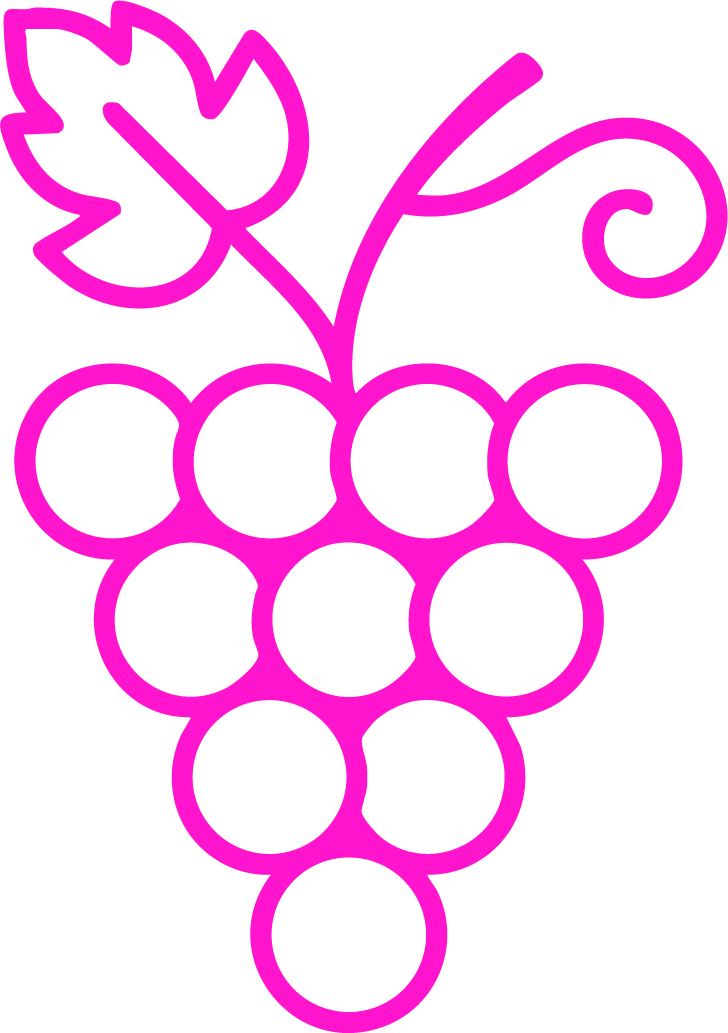Barbera
🔊 Pronunciation: bar-bear-ah
🔍 Quick Summary
Barbera is a juicy, vibrant red grape from northern Italy known for its mouthwatering acidity, deep color, and food-friendly charm.
📜 History
Origin: Born in the 13th century in the Monferrato hills of Piedmont, Italy — exact ancestry unknown but likely native to the region.
Centuries of resilience: Barbera was widely planted by the 1600s, praised for its high yields and adaptability in northern Italy.
Peasant’s favorite: Long favored by farmers for its reliability and easy-drinking style — often called the people's wine of Piedmont.
Modern makeover: Since the 1980s, top producers have refined Barbera with lower yields, oak aging, and single-vineyard bottlings.
Global traveler: Now planted in California, Argentina, and Australia — often retaining its hallmark freshness abroad.
🧠 What to Know
Barbera is both historic and dynamic, capable of rustic charm or polished elegance.
High acidity = food star: Its zippy acidity cuts through rich food and makes it ultra drinkable.
Low tannin = soft feel: Naturally smooth on the palate — rarely harsh or drying.
Two Piedmont styles: Barbera d’Asti = fruitier and brighter; Barbera d’Alba = richer, denser, often oak-aged.
Color surprises: Despite its softness, it delivers deeply pigmented, inky purple wines.
Versatile expression: From carbonic, chillable reds to structured, cellar-worthy cuvées.
📍 Where It’s Found
Still most famous in Piedmont, Barbera thrives in diverse terroirs globally.
🇮🇹 Asti, Italy – Clay + temperate hills = vibrant, juicy reds
Warm continental | 75–85°F (24–29°C) summer highs
🇮🇹 Alba, Italy – Limestone + warmer slopes = fuller, oaked styles
Warm continental | 77–87°F (25–31°C)
🇺🇸 California (Central Coast) – Alluvial soils + sunshine = ripe, plummy takes
Mediterranean | 70–85°F (21–29°C)
🇦🇷 Argentina (Mendoza) – Andean altitude + sun = crisp and concentrated
High desert | 75–90°F (24–32°C)
🇦🇺 Australia (Victoria) – Cool climate + innovation = juicy, new-wave Barbera
Cool-moderate | 65–80°F (18–27°C)
👅 Flavor & Style
Barbera delivers plush fruit with a zesty lift — always vivid, never dull.
Color: Deep ruby to purple-black
Aromas & Flavors:
Primary: Black cherry, plum, raspberry, blueberry
Secondary: Clove, vanilla, toast (when oaked)
Tertiary: Dried herbs, leather, balsamic (with age)
Structure:
Body: Medium to full
Tannin: Low to medium
Acidity: High (its signature!)
Alcohol: Moderate to high (13–14.5%)
🛠 Winemaking Notes
Barbera adapts well to many techniques, from glou-glou to serious reserve.
Stainless steel for freshness: Common for fruity, youthful Barbera d’Asti.
Oak aging = depth: Barbera d’Alba often sees a barrique for complexity.
Blending rare: Usually vinified solo to showcase pure character.
Single vineyards rising: Premium expressions highlight terroir differences.
🍽 Food Pairing Ideas
Pairs brilliantly with rich foods that play off its acidity and softness.
Savory: Osso buco, sausage pizza, roasted eggplant
Cheese: Fontina, taleggio, gorgonzola dolce
Unexpected: Fontina, taleggio, gorgonzola dolce
🔗 Related Topics to Explore
🍇 Dolcetto – Piedmont’s softer, darker-fruited red
🌍 Taleggio – Funky-smooth cheese that melts into Barbera
🌱 Volcanic Soils – Bright acidity and minerality
⚗️ Barbera d’Alba – The bolder, oak-aged sibling



